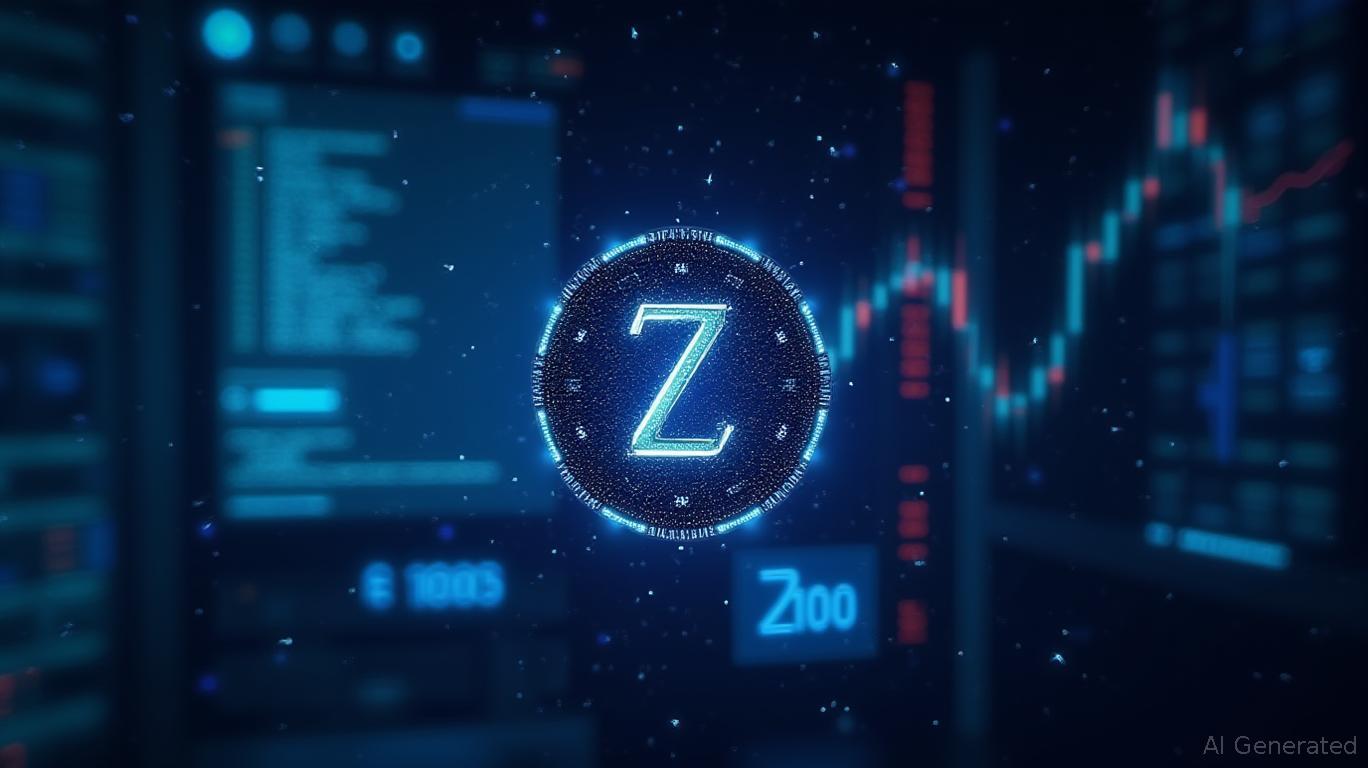Public-private collaboration against crypto crime halts $300M, demonstrating that technology and cooperation can disrupt illegal activities
- T3 FCU froze $300M in criminal assets since 2024, aiding 23 jurisdictions including Brazil’s Operation Lusocoin. - Europol warns crypto crime grows complex with privacy coins and layering techniques, totaling $40.9B in 2024 illicit flows. - Public-private partnerships like T3 FCU’s AI-driven analytics and Europol’s SIENA system aim to preempt illicit crypto activity. - Experts stress standardized blockchain tools and cross-border training to address inconsistent methodologies in crypto crime investigatio
The international crackdown on crypto-related financial crime is gaining momentum, as law enforcement agencies and private companies join forces to freeze illegal funds and tackle advanced blockchain exploitation. T3 FCU, a collaborative effort between
These initiatives underscore the expanding importance of blockchain analytics in disrupting illegal activities. Europol’s European Financial and Economic Crime Centre (EFECC) has cautioned that crypto-related offenses are becoming more sophisticated, with offenders employing complex layering tactics and privacy-oriented digital currencies to avoid detection. Chainalysis projects that $40.9 billion in unlawful crypto was received in 2024, highlighting the magnitude of the issue, as also referenced in the Europol report.
T3 FCU’s achievements are rooted in real-time cooperation with global law enforcement. In Brazil, the team helped freeze 4.3 million USDT connected to the same laundering scheme, earning official commendation from the Brazilian Federal Police. Comparable actions in the U.S. and Europe resulted in $83 million in assets being frozen, with the U.S. and Spain among the primary beneficiaries of the collaboration. T3 FCU has also tackled hacks linked to North Korea, such as the Bybit case, which saw $19 million frozen, according to Blockonomi.
The increase in so-called "wrench attacks"—physical robberies targeting crypto owners for their private keys—has made enforcement even more challenging. France documented 16 such cases in 2024, leading to calls for greater public awareness about secure key management and the use of multi-signature wallets, as the Europol report points out.
Collaboration between the public and private sectors is viewed as essential for countering these emerging risks. Paolo Ardoino, CEO of T3 FCU, stated that blockchain technology "drives transparency and security," while Justin Sun of TRON described the $300 million figure as "evidence that real progress is made when technology, organizations, and individuals unite." The initiative has also broadened its network with the T3+ Global Collaborator Program, naming Binance as its inaugural official partner.
Burkhard Mühl, head of Europol’s EFECC, highlighted the importance of unified blockchain analytics and international training to boost investigative effectiveness. Diana Pătruț from the Blockchain Intelligence Professionals Association (BIPA) remarked that inconsistent practices and the absence of universal definitions for crypto crimes slow advancement, urging for joint standards between industry and government, as mentioned in the Europol report.
As crypto-related crime continues to change, enforcement tactics must also adapt. T3 FCU is prioritizing AI-powered analytics and instant monitoring to anticipate illegal transactions before they are finalized, while Europol’s SIENA platform strengthens intelligence sharing among its members. These steps are crucial for sustaining confidence in digital currencies as they become more integrated into traditional finance.
Disclaimer: The content of this article solely reflects the author's opinion and does not represent the platform in any capacity. This article is not intended to serve as a reference for making investment decisions.
You may also like
Bitcoin News Update: La Culex Takes a Bold Bet: Will Meme-Based Cryptocurrency Surpass Bitcoin’s Reliability?
- La Culex ($CULEX) presale targets 30,683% ROI with $0.00002274 tokens, leveraging meme-driven mechanics and structured tokenomics including burns and staking. - Unlike Bitcoin's $112k stability or TRON's $0.0946 growth, La Culex offers asymmetric risk-reward via community-driven engagement and gamified retail appeal. - Ethereum-based framework with automatic liquidity and transparent governance differentiates it from meme coins, mirroring MoonBull's utility-driven model. - Dynamic pricing increases token

Solana Latest Updates: ARK Makes Major Investment in Crypto Infrastructure Amid ETF Outflows
- ARK Invest's ETFs (ARKK, ARKW, ARKF) now hold $2.15B in crypto assets, reallocating from traditional tech stocks. - The firm increased crypto exposure to 29% in ARKF, investing in Coinbase, Robinhood, and Bullish (CoinDesk's parent). - Despite mixed reactions to Solana ETFs and outflows in Bitcoin/Ethereum ETFs, ARK emphasizes long-term crypto infrastructure bets.

Open-Source AI Movement Faces Resistance from Profit-Oriented Tech Corporations
- Vitalik Buterin advocates open-source autonomous driving to boost innovation and safety, challenging profit-driven tech giants. - AI stocks like C3.ai (-2.96%) underperform as Microsoft and NVIDIA gain traction through proprietary AI hardware and OpenAI partnerships. - OpenAI's potential IPO and $11.6B 2025 revenue projections highlight tensions between non-profit models and commercialization, amid copyright lawsuits. - Market volatility (84% call/79% put implied volatility) reflects uncertainty over AI'

ZEC Climbs Close to $400 While Technical Signals Suggest a Potential Pullback
- Zcash (ZEC) surged near $400, outperforming Bitcoin and Ethereum, but technical indicators signal potential correction due to bearish divergences and weakening momentum. - On-chain data highlights rising retail activity and distribution phase warnings, suggesting short-term profit-taking and waning institutional interest. - ECC’s Q4 2025 privacy upgrades aim to strengthen ZEC’s value proposition, though mixed sentiment persists amid macroeconomic headwinds and Fed rate impacts. - Analysts warn of 10%–12%
